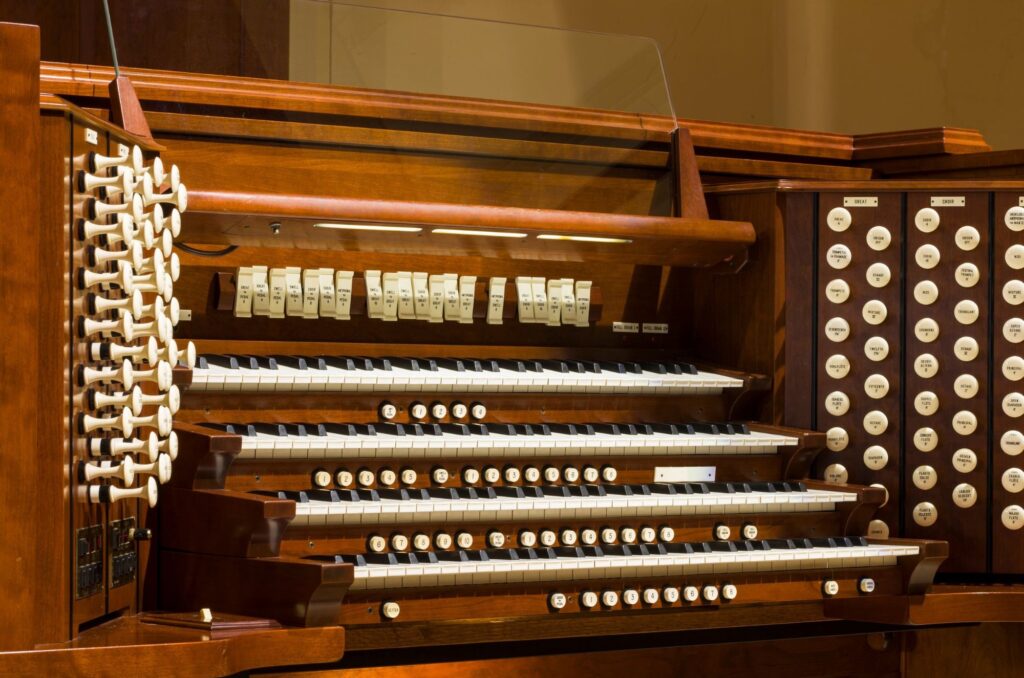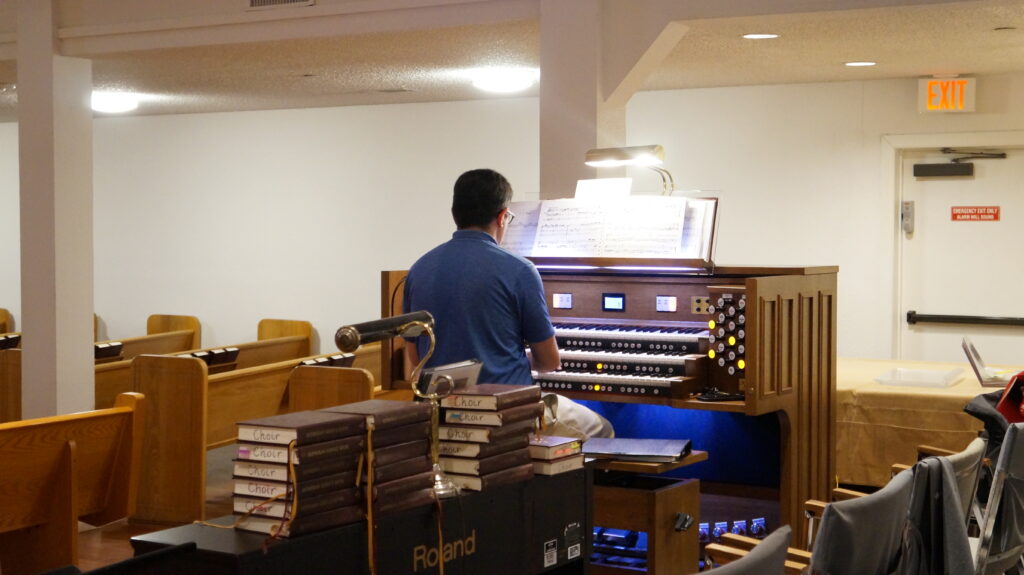17 Jun Music Notes ~ Why Do We Sing Primarily with the Organ, of All Instruments?
By Cantor Miguel Ruiz

It would be hard to imagine a Lutheran service of worship without the driving musical force of an organ. Its use in most traditional worship tends to outweigh all other musical instruments combined! Why so much emphasis on one single instrument? The truth is that the organ is a relatively recent instrument, only existing in a form resembling what we have today for the last 500 years or so. Thus, for the first three-fourths of Christian history worship was conducted mostly without it.
Believe it or not, Christ and his apostles sang and worshipped without an organ! Also, notably, Martin Luther himself was opposed to the use of the organ in worship. In his day it was only common in the larger churches and cities, and in his mind, he associated it with the corruption and excess he found in his visit to Rome. The organs of his day were considerably smaller, and their use was primarily to “sing” parts of the liturgy in alternation with the choir, rather than as an accompaniment to them. While we might chant responsively between the pastor and the congregation, the medieval church would often “sing” responsively between the choir and the organ.

Once the early Lutherans began writing and disseminating hymns for the entire assembly to sing, the organ was still used, at most, to intone, or introduce, the singing of a hymn. 75 years after the death of Luther, the organ was also being used to “sing” select stanzas of a hymn in alternation with the assembly, choir, clergy, and other instruments. It wasn’t until nearly 150 years after the Reformation began that the use of the organ to accompany congregational songs was starting to become commonplace. How then did the people sing?
The choir served the function in those services that our organ serves today. They would sing out on all the hymns (in unison, mind you, no four-part harmony with the assembly) to help them join in the song. They were expected to sing at every service, and were most often comprised primarily of children from the local schools, where the hymns and chants of the service were diligently taught and memorized. During the 30-years’ war, choral forces began to ebb as death and disease decimated populations. Around this time, it was discovered first that the organ could be used to support a smaller choir in singing music where they did not have enough voices to cover all the vocal parts. The organ could “sing” the missing part along with the choir, and then eventually sing all the parts along with the singers to support them. It was a natural step from there to assisting the congregation in the singing of their stanzas on the hymns, especially where the choir might not be large or strong enough to lead a room full of worshipers. This finally became the common practice by around the birth of J. S. Bach in 1685. Thus, the organ functions as a “choir” of sorts, to lead and support singing, by choir or assembly.

The organ is uniquely suited for this function for two reasons: First, as a wind instrument, it literally moves air to create sound similar to the human voice. Indeed, its tone was primarily designed to reflect or imitate the sound of the human voice. It is thus better suited than any other instrument to be a functional substitute for a vocal ensemble.
Secondly, it is the only instrument that was created, developed, and evolved almost exclusively within the context of Christian worship for the express purpose of serving the needs of the liturgy. If any musical instrument could be called “Christian,” it would be this one, and apart from the worship of Christ, this instrument would likely never have developed into its current form. Most organ builders, when designing the tone of the pipe sounds, deliberately craft the sound to emphasize the highest and lowest ends of the frequency spectrum.

The purpose of this is two-fold. First, the human voice centers around the middle frequencies, and an organ whose sound did the same would not only drown out the assembly, but in combination with it would sound like an inarticulate mess. Second, by emphasizing the aural spectrum outside the ordinary range of human singing, it becomes easier for an assembly to hear the organ while they are singing, making it possible for them to follow the leadership of its often-subtle aural cues.
All musical instruments are tools in the craft of an art whose highest purpose is the worship of God, and thus all instruments have a potential to enrich and support our musical praise. But this instrument, above all others, is the “backbone” of congregational singing because it exists and has been designed specifically for the purpose of empowering assemblies to join together in rich, full, musical participation in our liturgical celebration.
Do you have any questions about the music we use in our services? Send your questions to Messiah’s Cantor, Miguel Ruiz, at [email protected], and perhaps they can be answered in a future “Music Notes!”
